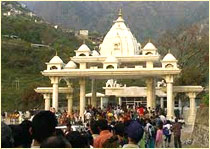ambhira parshvnath bhagwan,Gambhu
Shree Gambhu jain tirth is oldest and famous tirtha of Gujarat.This tirth suited in middle of the Gambhu village.Prachin litreture of jain”Gambhira” or “Gambhuta” ancient name here.it’s two munjal shilpkam building of jainalaya. There was a time when Gambhu was the central place of Jainas. It was again the capital in the midst of a group of 144 villages. Gambhu village is many temple of devi-devta The history of the village is stated to go to as early as the ninth century of the Vikrama era. The village is earlier in its existence than Patan prabhat nagri.this village proof is 1140 maharaj karnaraja tampatra and 1156 maharaja shree siddhraj jayshih tamptra so gambhira nagari is very prachin.
 History of Gambhira Parshvnath Bhagwan:-
History of Gambhira Parshvnath Bhagwan:-
The idol of Shree Gambhira Parshvanath Bhagavan is considered to be of times of king Samprati.Gambhira is a main nagar of 144 village.Mantri vimal ray Purvaj is ninasheth here suited in first to order the kuldevi mata.patan first citizen of ninasheth son lahirsheth and prapotra vimalsha sheth original citizen of this village its produfus.. In V.S. 919 Acharya Shri Shilankacharya wrote a commentary on the “Acharanga Sutra”. The ancient work “Sushruta” was composed here.there are many worked like “shusrut grunth” and “sharavk pratikraman shutra”.the gambhira pashvnath bagvan chamtkar aneka in people asked one chamtkar is daily bagvan hand in silver coin collect. This silver coin are collected in temple pujari in morning but one day pujari was late in temple To Puja and other person(village man) early morning the temple and collected in silver coin. Then next day Pashvnath bagvan hand is empty way so all village people are Information to This chamatkar And proof in v.s 1823 to write a novel is “prabhavi pashvnath chamtkaro” writted by shree manilal naynchand Another write book is “purisadani shree pashvnath” by sarabahi navab.This jain temple second munjal have a two bhoyra(turnal) one have a modhera sun temple and second is patan.modhera sun temple and patan turnal are connected this turnal.
The Murti Profile is to Nearly 46 cms. high, white – colored idol of Bhagawan Gambhira Parshvanath in the Padmasana posture.in Gambhu village And the Last 5 year this tirth famous and popular.Everyday lot’s of jain Sadhu and people Are visit this temple so wel-come to visit this place it’s my Village Temple.
How to Reach This Temple:-
Gambhu Jain Temple Nearest bus stop is mehsana just 25 k.m and also Railway station. You can way from modhera chokdi via modhera sun temple Road,via Nugar,Ranela village and Ganeshpura Village stop and Turn to Gambhu Village just 3 k.m..you have visit this Temple and any dificulty plz E-mail ya comment it.
Address :- Shri Gambhu Jain swetmbar Murtipujak Sangh Trust, P.O= 384 011, At=Gamhbu, Taluko= Becharaji, Dist.=Mehsana State=Gujarat,India, Phone Number=02734 282325



























 Belief
Belief  Location
Location 











